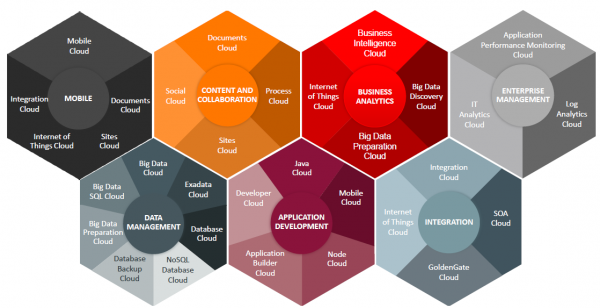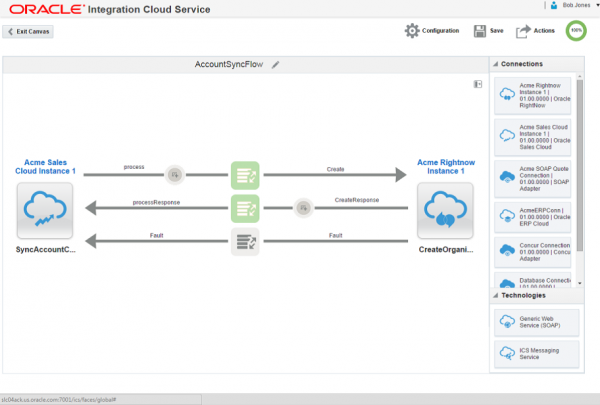Research firm IDC forecasts that the worldwide public platform as a service (PaaS) market is expected to grow to more than $14 billion in 2017. As part of this move to the cloud, companies are no longer only looking for SaaS (applications) or IaaS (Infrastructure), but are instead considering application platforms and workloads to gain similar benefits for the platform layer (PaaS) – A computing platform that allows the creation of applications quickly and easily and without the complexity of buying and maintaining software and infrastructure.
Many organizations have begun to embrace PaaS (Platform) portfolio of services for the various benefits offered, including standardization, automation, performance, scalability, portability, performance, and seamless integration – all with a flexible capital expenditure approach. In this post, we’ll look at the benefits of this approach and take you through the adoption process step by step.
- Faster & More Efficient Deployment: Eliminating the need to procure, install and configure hardware and servers for on premise applications – which would take weeks or months to do so, before they even start writing one line of code for their custom application or deploying a prebuilt application. PaaS lets applications get into the hands of testers and end-users nearly as fast as they can be developed.
- Cost Reduction: With the standardized and consolidation of resources (e.g. servers) as well as elimination of redundant work across teams and the fewer elements (servers, storage, network components) in the mix – all relate to reduced capital expenditures and thus reduced operating expenditures because of the efficiencies gained in managing a consolidated environment.
- Agility & On Demand Capacity: When application workloads fluctuate, PaaS scales in and out to better match supply with demand. Procuring and maintaining on-premises infrastructure and software with such workload related fluctuations have been costly and time-consuming.
As one would expect, Oracle has numerous PaaS offerings in each of the cloud categories and has consolidated and grouped its offerings under various PaaS portfolios:
One of the core bundles of the Oracle’s PaaS portfolio is focused on integration, with its recently announced SOA cloud service and readily available Integration Cloud service (ICS) being part of its core offerings.
The Challenge
The rapid shift from on premise applications to a hybrid mix of SaaS & on premise applications has introduced big challenges for companies attempting to simplify enterprise application integration. Reasons for this is the ease in which Businesses can subscribe to multiple disparate SaaS applications with little or no involvement from internal IT. Once the LOB starts using the application however, there is often a need to integrate with existing applications. Existing integration platforms have been too complicated to easily include participation with LOB application users, resulting in a costly, time consuming, and error prone attempts at integration.
Thus, connecting cloud applications to each other and to on premise applications and data is required to fully utilize organizational business benefits, productivity and return on investment. With traditionally available SOA based integration platforms these integrations have been too complicated to be implemented resulting in a costly, time consuming, and error prone attempts at integration.
Additional challenges have included up-front set up costs, security, design complexities with no prebuilt integrations requiring common integrations to be developed from scratch, deployment lock-in’s, inability to transition deployments amongst public-private cloud applications and on premise applications, etc. all resulting in the inability to transition based on changing business requirements.
Cloud-Based Integration Approach
As part of Oracle’s Cloud Integration strategy, Oracle’s “Integration Cloud Service” (ICS) provides a new approach to application integration in today’s ever-changing dynamic IT scenario.
When an organization’s business applications run in the cloud it makes sense to integrate them natively in the cloud. Oracle Integration Cloud Service solves the SaaS to SaaS and SaaS to on-premise integration challenges providing service oriented architecture (SOA) best practices with all the cloud benefits.
Key Features
- Self-service portal to activate your integrations in minutes
- Native connectivity to SaaS and on-premise applications
- Graphical tools covering full lifecycle from design to monitoring
- Import and export integrations to Cloud Marketplace
- Monitoring & Error handling – Providing developers and administrators monitoring dashboards with 360 degrees view on their integrations including message in-flow, failure rate and other key metrics.
- Intuitive graphical development environment
– Integration Cloud Service (ICS) provides a point-and-click development environment requiring minimal configuration and zero coding, using concepts and terminology familiar to application users. The interface runs in a web browser. All one has to do is to, simply choose applications for integration endpoints, define messaging and error handling, and optionally enrich integrations with more advanced configurations.
– The interface also features a graphical data mapper that enables users to accelerate mappings through a simplified drag and drop interface, and most importantly, integrates with Oracle Recommends™, a feature that provides the user intelligent recommendations on mappings based on a semantic inference engine. Integrations can also utilize lookup tables for automatic value mappings.
– Application connectivity is supported through a library of rich adapters, eliminating the complexity of hand-coded integration with complex application endpoints. Adapters expose meaningful services and business objects that are more straightforward to consume without expert insight.
Key benefits
- Productivity improvement for developers & administrators with instant, self-service integration platform managed by ICS
- Accelerated time to market with self-service provisioning and intuitive tools
- Rapid deployment with native connectivity, and readymade packaged integrations from Oracle and Cloud Marketplace
- Zero coding and configuration with point-and-click user interface
- Highly available, scalable integration platform at your fingertips with simple subscription
Advantages
- Standardized and consolidated at the PaaS layer
- Platform with a Comprehensive set of capabilities that are well integrated – to help reduce the time and cost of managing the applications platform – flexible cloud offerings pre-built to work together, with built in tools for development and management.
- Service level guarantees by Oracle – matching the demands required by traditional data center capabilities.
- Unified, standards based PaaS platform for public/private portability – Easily adaptable to a flexible hybrid cloud model.
- Platform stability to cater to demands surrounding Development, Testing and Production requirements.
Perficient’s certified & experienced cloud solution architects strategically advise and conceive solutions that simplifies development of integrations between your applications in the cloud and between applications in the cloud and on premises. We will help you make cost-effective and efficient decisions on leveraging Oracles Cloud integration Services with a library of pre-built integration packages and adapters from Oracle and its partners, thus integrating your SaaS applications in matter or days.
Cloud Integration PoC Packaged Offering
Perficient’s ICS based solution can provide your organization with greater agility to business demands, more effective use of resources, and lower capital expenses. Our readiness evaluation and PoC (Proof of Concept) packaged offering can help you begin to realize these gains in as few as 20 days.
The goal of the PoC is to take relatively simple integration candidates, build these in the cloud using the ICS PaaS platform, assess the benefits, and help assess the likely TCO for you to make an informed decision whether an ICS platform subscription is right for you.
- Assess your portfolio of existing and potential future SaaS subscriptions for their candidacy for a cloud based integration. Evaluated on complexity, technical feasibility, readiness, criticality and risk.
- High level view of your cloud ambition & the building blocks that will be required to achieve that vision.
- Priorities potential integrations, for ease of implementation and value to the business.
Sprint 2 – Provision & Configure
- Planning and Design activities to include the configuration & provisioning of the Integration Cloud Service PaaS platform.
- Configuration of the connection details for these applications within the ICS environment.
Sprint 3 – Design & Mapping
- Design & creation of the integrations using configured adapters within the ICS Designer.
- Data mapping activities related to the candidate SaaS applications – Using the graphical Mapper to tell Oracle ICS how to map data between your SaaS applications.
Sprint 4 – Integrate & Activate
- Complete the initiated integrations from the previous sprint and activate all your designed integrations.
Sprint 5 – Monitor & Review
- Use the ICS Dashboard to view stats that tell you how well your integrations are running, pinpoint bottlenecks, monitor errors, and see details for each running integration
- Review the PoC with stakeholders & sponsors.
- Work with you to evaluate your future integration requirements.
Reference:
– Oracle ICS Data sheets & Relevant materials
– Oracle White Paper – Five Ways to Simplify Cloud Integration (Aug 2015)



